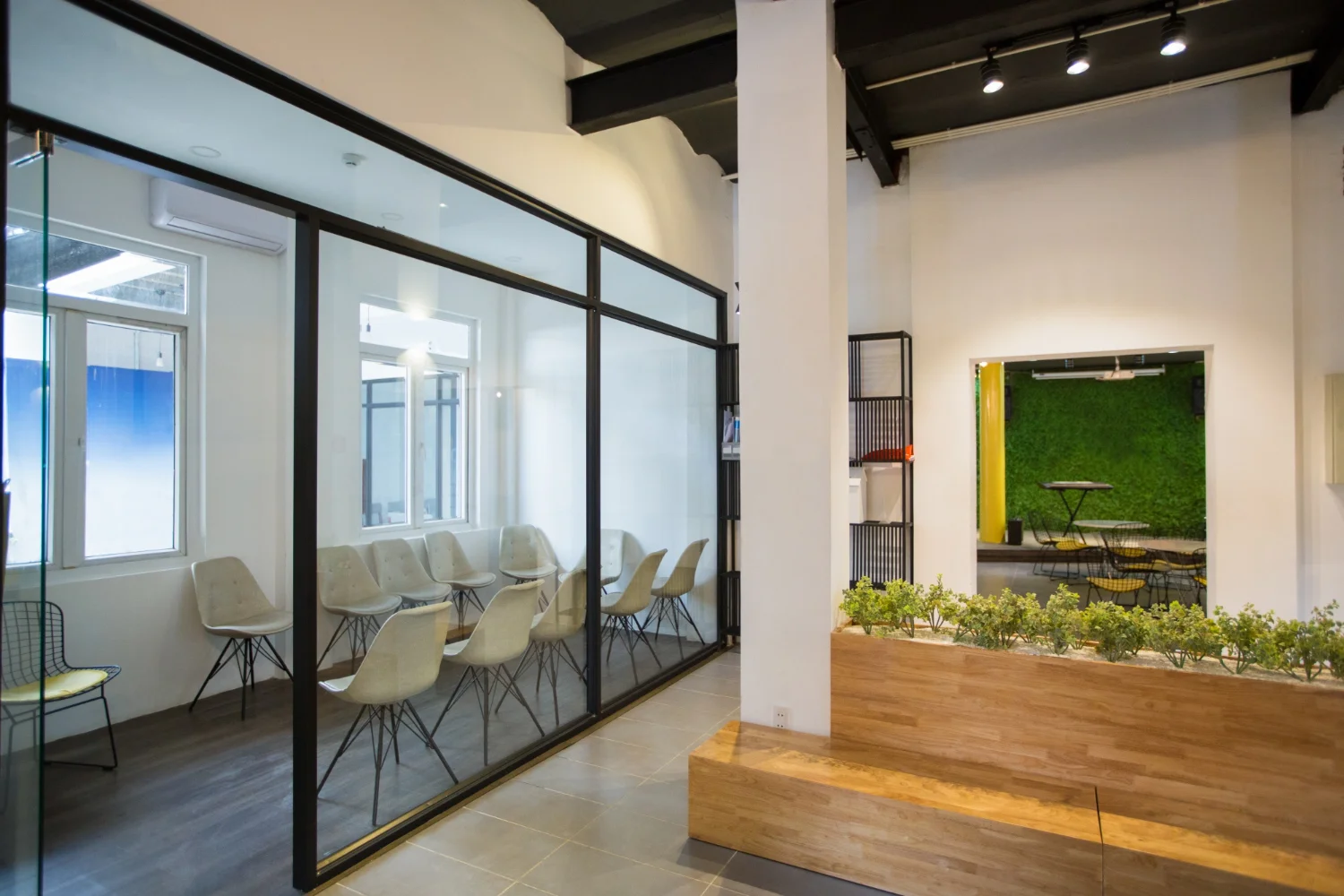Most workplaces today are rethinking their layouts to boost productivity and enhance employee satisfaction. Regarding dividing your office space, the choice between glass office partitions and drywall is significant. Each option has its unique benefits and drawbacks, affecting not only aesthetics but also light flow and sound privacy. In this post, you’ll explore the differences between glass partitions and drywall, helping you determine which solution best fosters productivity in your work environment.
The Impact of the Environment on Employee Focus

Your workspace significantly influences your productivity levels and overall focus. A well-designed environment can enhance concentration, while one that is cluttered or poorly structured may lead to distractions and decreased efficiency. Factors such as lighting, layout, and materials used play vital roles in shaping your daily work experience. Understanding the impact your environment has on your state of mind can help you make informed choices about your office setup.
The Role of Visual Clarity in the Workspace
A clean and visually clear workspace promotes mental clarity. With the option of glass office partitions, you can enjoy a sense of openness while allowing natural light to flow through. In contrast, drywall can create a more segmented and visually overwhelming environment. When your surroundings are organized and transparent, it becomes easier to focus on your tasks, reducing the mental clutter that often leads to distractions.
Acoustic Considerations and Their Effect on Concentration
A noisy environment can derail your focus and hamper productivity. Glass office partitions may sound counterintuitive for noise reduction, but they can be designed with sound-dampening technology that minimizes distractions. Drywall, while inherently better at blocking sounds, can still transmit noise if the office layout does not account for disruptive elements. Balancing aesthetics and acoustics is vital for maintaining a concentration-friendly workspace.
Excess noise has a measurable impact on your productivity, often leading to increased stress levels and decreased work quality. For instance, studies indicate that open office spaces can decrease productivity by up to 39% due to distractions caused by unwanted noise. While drywall inherently offers better sound insulation, the effectiveness depends on the office layout, material quality, and any acoustic treatments in place. When selecting between glass partitions and drywall, consider options that incorporate acoustic panels or sound-absorbing materials to ensure a more focused work environment. Ultimately, addressing both visual clarity and acoustic performance is key to boosting overall concentration and productivity.
Balancing Aesthetics and Functionality

Finding the right balance between aesthetics and functionality in your office design can significantly impact overall productivity. Both glass office partitions and drywall offer unique advantages in this regard, allowing you to create a workspace that is not only visually appealing but also supports the way your team works. By carefully considering the needs of your employees alongside the visual impact of your chosen materials, you can create a setting that enhances both motivation and focus.
Glass Office Partitions: The Modern Appeal
Glass partitions bring a sleek, modern aesthetic to your office space, promoting an open feel while allowing natural light to flow throughout. This transparency fosters communication and collaboration, making it ideal for creative teams. The minimalist design of glass contributes to the overall ambiance, creating a contemporary environment that can invigorate employee productivity.
Drywall: Traditional Comfort and Customization
Drywall offers a more traditional approach, allowing for greater customization of your office layout. This material provides solid walls that can be painted, decorated, or divided into various spaces, catering to your unique branding and design requirements. You can also enhance soundproofing through insulation, which creates a comfortable and private environment, crucial for concentration and focused work.
Furthermore, drywall’s adaptability extends to the level of customization you can achieve. Whether you wish to create themed meeting rooms, personal workspaces, or collaborative zones, drywall allows you to manifest your vision. The ease of making changes to the layout, adding shelves or storage, and incorporating technology makes it an excellent choice for businesses that anticipate growth or evolving needs. With drywall, you can also incorporate warmth through colours and textures, ensuring your office feels welcoming and conducive to productivity.
Cost Analysis: Short-term vs. Long-term Investments

The cost implications of choosing glass versus drywall extend beyond mere installation. Both options present unique financial considerations that affect short- and long-term budgeting.
Initial Setup Costs: A Comparative Look
Cost Comparison Table
| Type | Estimated Cost per Square Foot |
|---|---|
| Glass Office Partitions | $50 – $100 |
| Drywall | $10 – $30 |
Maintenance and Durability: Long-term Financial Implications
Choosing between glass office partitions and drywall will impact your long-term maintenance costs significantly. Glass partitions require minimal upkeep in terms of repairs and typically maintain their appearance, which can save you money over time. In contrast, drywall can show wear and tear, often necessitating repainting, patching, or replacement, leading to higher ongoing expenses.
Glass office dividers generally come with a longer lifespan due to their resilience and aesthetic appeal. While the initial investment might be steeper, the savings in maintenance, coupled with the potential for increased productivity due to enhanced natural light and visual connectivity, can make glass a more economically sound choice over the years. In contrast, drywall may seem budget-friendly upfront, but can quickly accumulate costs related to maintenance and replacements. Evaluating these factors is key to making a decision that aligns with both your financial strategy and workplace goals.
Flexibility and Change: Adapting Workspaces for Growth

Adaptability in the workplace is paramount as businesses evolve and expand. You may need to reconfigure your office layout to accommodate new teams, ensure collaboration, or embrace emerging work trends. Glass office partitions offer easy reconfiguration options, allowing you to modify spaces without extensive renovations. This flexibility can enhance your company’s ability to pivot in response to market demands or internal changes, ultimately supporting sustained growth and productivity.
Modular Design Benefits of Glass Partitions
Glass partitions are inherently modular, enabling you to create customized spaces that can be reconfigured with minimal disruption. This modularity fosters an environment that can swiftly adapt to team size, project needs, or even shifts in organizational culture. As your business grows, these partitions make it easy to modify layouts and increase or decrease office sizes, keeping your workspace aligned with your operational goals.
Limitations of Fixed Drywall Structures
Fixed drywall structures pose significant limitations in dynamic work environments. Once erected, these walls are challenging and often costly to alter, leading to wasted resources when adjustments are needed. This rigidity can hinder your ability to respond promptly to changes in team structures or business strategies, ultimately stifling your flexibility. Moreover, drywall can contribute to a stagnant office atmosphere, not fostering collaboration and open communication that is critical in modern workplaces.
Shifting to a different configuration with drywall can require substantial time and funding, as traditional construction processes are not designed for quick changes. This fixed nature also means that any new needs you have for collaborative spaces or private offices may necessitate large-scale renovations, which could lead to prolonged disruptions in your daily operations. Weighing these factors against the versatility offered by glass partitions is crucial for maintaining an agile, responsive workspace that aligns with your business objectives.
Employee Well-being: Mental Health and Workplace Design

Your office layout significantly impacts employee well-being, especially in terms of mental health. A thoughtfully designed workspace can reduce stress, enhance focus, and promote overall satisfaction. Consider elements that encourage collaboration and support privacy; striking a balance can result in a healthier, more productive environment. By assessing how employees interact with their workspace, you can tailor designs that align precisely with their needs, leading to improved mood and performance.
Natural Light and Its Advantages
Natural light plays a pivotal role in enhancing the workplace atmosphere. Exposure to daylight has been shown to increase productivity, boost morale, and lower instances of absenteeism. Employees working in spaces filled with natural light report feeling more energized and concentrated. Incorporating glass partitions into your office design allows for daylight to permeate throughout the space, creating a more inviting and stimulating workplace environment.
Isolation vs. Collaboration: The Influence of Material Choices
The materials you choose for your office can significantly shape the dynamics of isolation and collaboration among employees. Glass partitions foster open communication and teamwork, while drywall enclosures may create barriers that promote solitude. A workspace designed for collaboration encourages innovation and social interaction, critical in today’s fast-paced business environment.
Organizations often face the challenge of optimizing their spaces for both individual focus and collaborative effort. For instance, tech companies like Google have adopted glass meeting rooms to encourage openness while maintaining quiet zones behind drywall or acoustic partitioning. This balanced approach mitigates the isolating effects of traditional cubicles while promoting fluid communication. In carefully assessing your space’s material choices, you can craft an atmosphere that harmonizes personal concentration with fruitful teamwork, thereby boosting overall organizational productivity and morale. Making informed decisions about environment design allows for a tailored approach that meets diverse employee needs, ultimately contributing to a thriving workplace culture.
Glass Office Partitions Summary
Drawing together the insights on glass office partitions versus drywall, you should consider how each option affects your workspace and overall productivity. Glass partitions promote openness and collaboration, enhancing communication among team members. On the other hand, drywall can offer privacy and noise reduction, which may be important for tasks requiring focus. Evaluate your unique needs and workplace culture to determine which solution aligns best with your goals for productivity and employee satisfaction.



